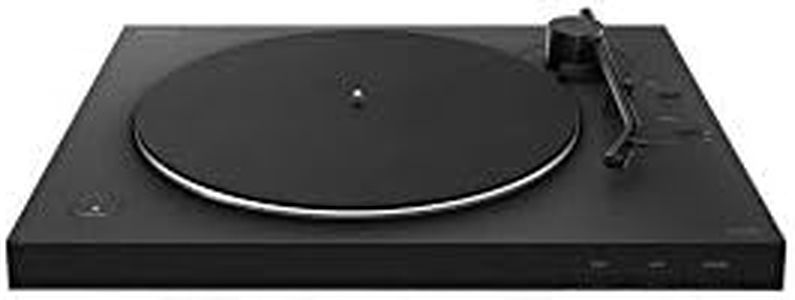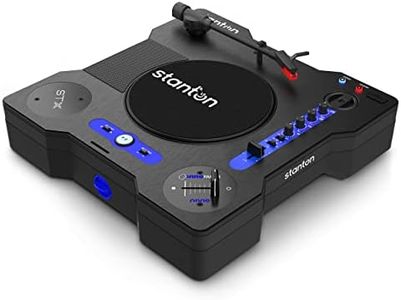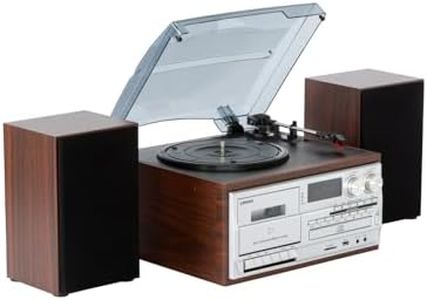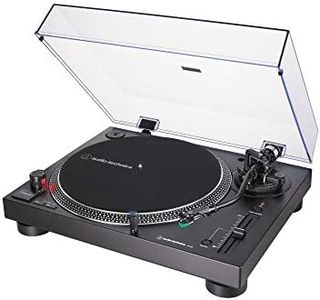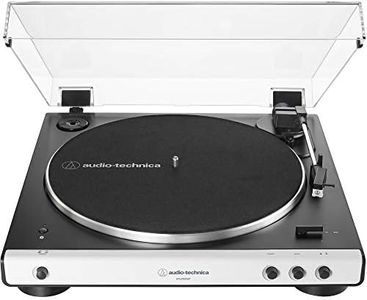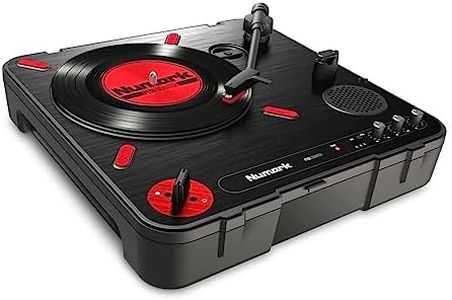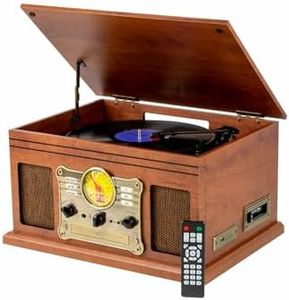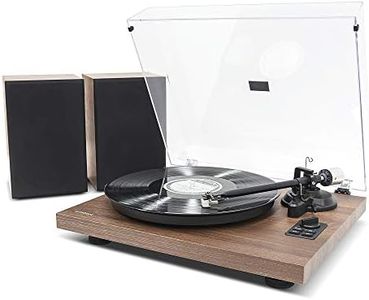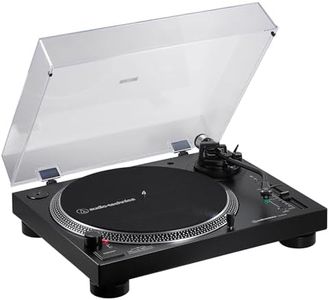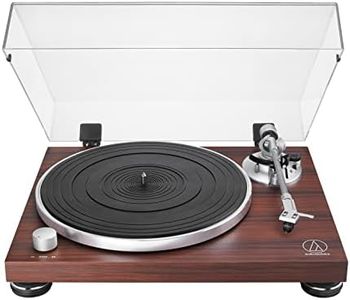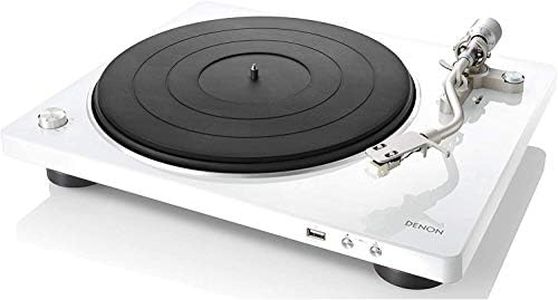We Use CookiesWe use cookies to enhance the security, performance,
functionality and for analytical and promotional activities. By continuing to browse this site you
are agreeing to our privacy policy
10 Best Usb Turntables
From leading brands and best sellers available on the web.#7
mbeat
11%OFF
MB-PT-28 Bluetooth Hi-Fi Vinyl Turntable Record Player with 36W Bookshelf Speakers, Supports 33/45 RPM Vinyl Record, Bluetooth Streaming via Smart Devices, Pre-installed Hi Fidelity MMC Stylus, Solid Metal Platter, Removable Dust Cover and Adjustable Counterweight and Anti-skating weight, Including Feature-Rich Audio Outputs, Line-in Pre-amplifier, USB Recording Function
Buying Guide for the Best Usb Turntables
USB turntables are a fantastic option if you want to listen to your vinyl records and also create digital copies of them easily. As traditional records have come back into popularity, USB turntables bridge the gap between analog warmth and digital convenience. When choosing the right model for your needs, it’s essential to understand what features matter most for your listening habits, the quality you'd like to achieve, and how you'll use the turntable -- whether it's mainly for digitizing, everyday listening, or both.USB OutputThe USB output on a turntable allows you to connect the device directly to a computer. This is important if you want to convert your vinyl records into digital files for use on other devices. Some USB turntables have plug-and-play connections that work with most computers, while others may require specific drivers or software. If you're less tech-savvy or want something straightforward, look for a turntable that advertises easy USB connectivity and bundled software.
Phono and Line OutputsPhono and line outputs determine how you can connect your turntable to external speakers or audio systems. Phono output requires a phono preamp to amplify the signal, while line output means the signal is already amplified and can be plugged into most home audio equipment. Some models offer a switch or both outputs. If you already have a receiver with a built-in preamp, either will work, but for more flexibility or simplicity, a turntable with switchable phono/line output is a great choice.
Cartridge TypeCartridges hold the stylus (needle) and affect sound quality and how records are read. There are two main types: moving magnet and moving coil, with moving magnet being more common and easier to replace. Some turntables come with a fixed cartridge, while others allow upgrades or swaps. Beginners may prefer models with a good-quality pre-installed cartridge, but if you want to experiment with sound or anticipate replacing the needle often, seek one with an upgradeable cartridge.
Drive System (Belt vs Direct Drive)The drive system moves the platter. Belt-drive models are quieter and better for home listening, while direct-drive models offer quick start/stop and are generally chosen by DJs. If you value audio purity for casual listening and digitizing, belt-drive can reduce noise. If you want to experiment with DJ techniques or need instant playback response, direct-drive is best.
Playback SpeedsTurntables can play records at different speeds: usually 33 1/3, 45, and sometimes 78 RPM. This determines which vinyl records can be played. If you have old or diverse records, check for support of all playback speeds. For most mainstream users with standard LPs and singles, 33 1/3 and 45 RPM are essential; 78 RPM is only needed for older shellac records.
Built-in PreampA built-in preamp boosts the audio signal so it’s ready for regular speakers or computer input. If your audio system doesn’t have a dedicated phono input, a turntable with a built-in preamp offers more flexibility. Pick this feature if you want simple plug-and-play connectivity without purchasing extra gear.
Recording Software CompatibilitySome USB turntables come with bundled recording software, while others are compatible with popular third-party applications. The recording software allows you to split tracks, adjust audio quality, and save files in different formats. If you want an easy digitizing experience, models with simple or well-supported software options are ideal; more advanced users may prefer the flexibility of compatible professional-grade programs.
Build Quality and IsolationBuild quality affects both longevity and sound performance. Heavier platters and solid construction minimize unwanted vibrations and improve sound clarity during playback and recording. For everyday listening or digitization, choose a sturdy turntable with good isolation feet or padding, especially if your setup is in a room with foot traffic or other sources of vibration.
